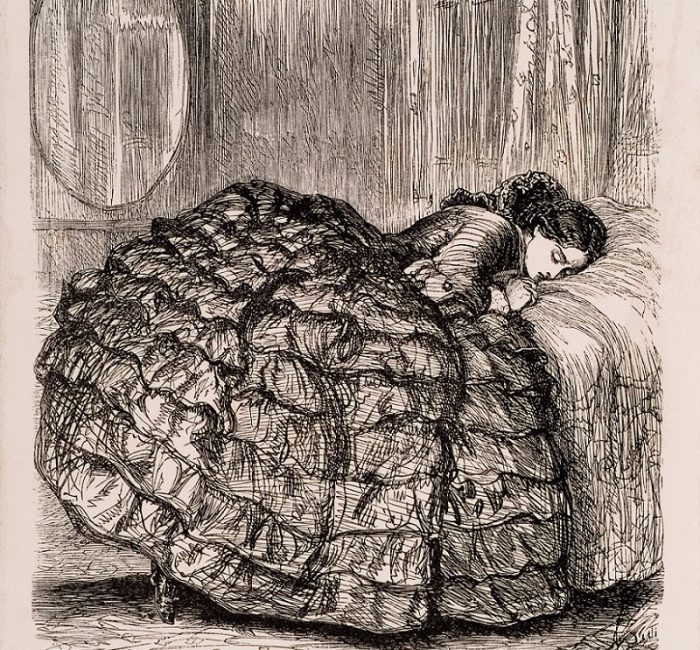*Elephant is not your doctor or hospital. Our lawyers would say “this web site is not designed to, and should not be construed to provide medical advice, professional diagnosis, opinion or treatment to you or any other individual, and is not intended as a substitute for medical or professional care and treatment. Always consult a health professional before trying out new home therapies or changing your diet.” But we can’t afford lawyers, and you knew all that. ~ Ed.
~
I can still remember—almost better than I remember the pangs of childbirth—the heaviness of the fatigue that overcame me one day in the Target parking lot.
No, fatigue doesn’t describe it well enough.
I was so depleted and exhausted, I had the urge to stop everything and lie down on the hot pavement. To tap out.
I was at Target to pick up my first prescription for my just-diagnosed Hashimoto’s disease, which, by this time, had likely gone undiagnosed and untreated for far too long.
Hashimoto’s disease is an autoimmune disease in which the body’s immune system gets stuck in attack mode and, no longer able to discern between enemies and friends, attacks our thyroid tissue.
This immune-system-on-hyperdrive is the commonality behind all autoimmune diseases: the body turns its natural defense mechanisms against itself. The difference between many autoimmune diseases is what the immune system attacks.
Shortly after I was diagnosed with Hashimoto’s by a medical doctor, I was diagnosed by a naturopath with adrenal fatigue.
Adrenal fatigue is a less-recognized condition in Western medicine but is certainly understood and treatable through the Ayurvedic system of medicine.
Our adrenals and our thyroid are intimately connected, and so are my diseases; they are both part of our endocrine system, and our pituitary gland controls both. The thyroid gland is primarily responsible for regulating the body’s metabolism and calcium, and the adrenal gland (among other things) is responsible for producing epinephrine (adrenaline)—our “fight-or-flight” (or “fight-flight-freeze”) hormone.
As we know, our body produces adrenaline to help us survive extreme life situations in which we need a boost of strength or speed to save someone else or get out alive. Then, once the situation is behind us, the body is supposed to return to more normal processes, such as digestion, metabolism, healing, and rebuilding tissue.
Humans benefit from the production of adrenaline for so much more than acute life or death situations, though. We call upon adrenaline’s power for athletic events, we pump it out when we’re excited or nervous about a new adventure or event, and it’s acute awareness that helps us navigate crowds or other stressful situations.
But the human body is meant to recover from life’s stresses—not constantly be expecting one. We’re meant to shake them off, literally, as this impala shakes off a near-death trauma:
Adrenaline is meant for short bursts of stress that soon pass — not for meeting a stranger at a coffee shop, giving a presentation, or maintaining us through long-term stressors such as job challenges, relationship stresses, or trying-to-pay-our-bills stresses. Adrenaline is great for helping us make snap decisions, but it’s not designed to help us make thoughtful, mindful, or grounded ones.
But, partially because the expectations of modern human life provide stressor after stressor, some of us live off of adrenal energy day after day, instead of only occasionally.
When we’re living off our adrenals, we respond and react to every situation, no matter how safe or how dire, with the quickness, impulsivity, and speed of adrenaline. We soon become addicted to adrenaline—calling on it for every encounter and every event.
In my mid-30s, I finally began the process of healing and adjusting my way of life as I studied and practiced Ayurveda.
It was then that I learned about the Ayurvedic concept of ojas, an invisible, supportive energy that provides a buffer between us and the stressors of life. It’s a bit like insulation for our energy, providing every tissue of our body with strength and stability. Its physical manifestation is our immune system, and it is directly correlated to the functionality of our adrenals: dysfunction of the adrenals results in low ojas, while proper functioning results in increased ojas.
When our ojas is depleted — when our energetic protective insulation thins — we become susceptible to disease and stress, and we’re chronically tired and reactive. When we have sufficient ojas, our body is more resistant to stressors, and we feel fresh and alive. Ojas provides stability to the body and mind, allowing us to weather changes with greater ease and grace.
In Ayurveda, autoimmune disorders such as Hashimoto’s Disease are viewed as disorders of ojas. Thus, rebuilding ojas is the best way to stop living off our adrenals, and not living off our adrenals is the best way to rebuild our ojas.
The benefits of doing so are many, including:
Lower Levels of Inflammation throughout the Body
When I was living off my adrenals, I often broke out in chronic hives that would last not just a few days, but a few months. Doctors didn’t know what caused them; they gave me steroids to suppress the outbreaks. I also struggled throughout my early life with other inflammatory diseases: acne, eczema, and digestive pain. I no longer struggle with these conditions. My skin is clear, and the last time I had hives was in 2014.
More Intimate (and Healthier) Connection to Food
When we’re living off adrenaline, we tend to crave food that matches its “personality.” We choose sugar, caffeine, quick-burning foods, or energy drinks—foods that can sustain us for the next hour or hours, rather than foods that help us heal, or support tissue growth, or allow for proper functioning. Once we stop living off our adrenals, we start craving foods that supply longer-term energy and nutrition. Instead of craving foods just to get through the day, we begin to crave foods that will help our organs function at their best.
Better Sex Drive
There is a direct connection between ojas and shukra, which is the sexual energy in our bodies. Thus, when ojas is depleted, our sexual energy is as well, but as we rebuild our ojas, our sex drive will follow suit.
Reclaim our Boundaries
To get off the merry-go-round of an adrenaline-fueled life, we’ve got to put boundaries in place. We have to be able to say no, and even f*ck off when necessary. We have to remember our value and start putting ourselves first. For women, freeing ourselves from “Nice Girl Syndrome” is critical.
Then, as ojas builds and we start living from more sustainable energy, we will have the wherewithal and presence to say no to things and people that don’t fit our lives or our lifestyle anymore, while also being able to say yes to the things that do.
Better (or More Genuine) Mood
Adrenal living is stressful living, and it eventually creates (or is in direct correlation with) anxiety and depression. However, when our body spends more time in its rest-and-digest state, our brain calms down, and we can experience a richer, fuller life.
Get Better Sleep
Exhaustion is not a formula for good sleep; we all know what it’s like to be too tired to sleep.
I’ve now worn an Oura Ring for over a year and grown addicted to watching my “readiness” score each morning, tabulated in part from my “sleep score.” As a result, I’ve become an excellent sleeper. I can now sense when my sleep score might be lower, however, because it’s tied to days where I’ve overexerted myself, whether with work, exercise, sun, relationship stress, or alcohol. I have enough ojas to sustain some amount of overexertion each day, but too much and my ojas depletes and takes my sleep with it.
Healthier Weight
Never knowing what it may be called on to do next, and feeling as if everything is an emergency, the body naturally (and wisely) stores weight in stressful times (part of the reason so many of us put on weight during COVID). This extra weight provides the buffer that ojas would normally provide. Thus, as we build our ojas back up, the body will naturally release excess weight.
Here are a few basic and natural Ayurvedic tips to start naturally supporting your adrenals and rebuilding ojas:
Herbs (please visit with an Ayurvedic practitioner to ensure these herbs are right for you):
- Ashwagandha
- Shatavari
- Licorice
- Brahmi
- Adaptogens, in general, help the body cope with stress, and are great for rebuilding ojas
Foods:
Eating foods rich in the elements of water and earth (cooked foods, oils, and fats), which contain the same elements that provide the structure and support of ojas will help the body build ojas levels back up. While in this process, spicy, fiery foods, as well as “airy” foods (raw, fried, and dried), should be limited as they deplete ojas. (Of course, once we have ample ojas, we can reintroduce these foods.)
Exercise:
Exchange the heat and intensity for fluid, grounded movement. Let the body come into deep rest and rejuvenation with practices like Yoga Nidra or Yin yoga. Walks around bodies of water or in nature also help replenish ojas and get us off the adrenaline junk food.
Lifestyle:
Practice mindfulness, let go of unhealthy thoughts and behaviors, find creative and emotional outlets, and maintain healthy, life-giving relationships. In addition, spiritual counseling and healing practices can be helpful in setting necessary boundaries and building self-esteem and self-worth, which are natural antidotes to stressors.
I remember an evening in my mid-20s when I shared with my now-husband that I didn’t think I would live very long.
He asked me why not. I said I didn’t know.
But looking back, I think I sensed that I was living off my adrenals and that it was not a sustainable way to live. There’s only so long any of us can live in a chronic fight-or-flight state. I lived this way for another 10 years or so before that near-collapse in the Target parking lot.
Now, a decade later, I don’t have this sense of a short, quick life anymore and instead can picture a long, healthy life for myself. As I’ve moved from living off adrenaline to building up my ojas, my body and mind feel supported and “cushioned” and can thus rebound more quickly from stress—maybe not quite like that impala, but at least more like how we human beings are designed.
~








Read 28 comments and reply